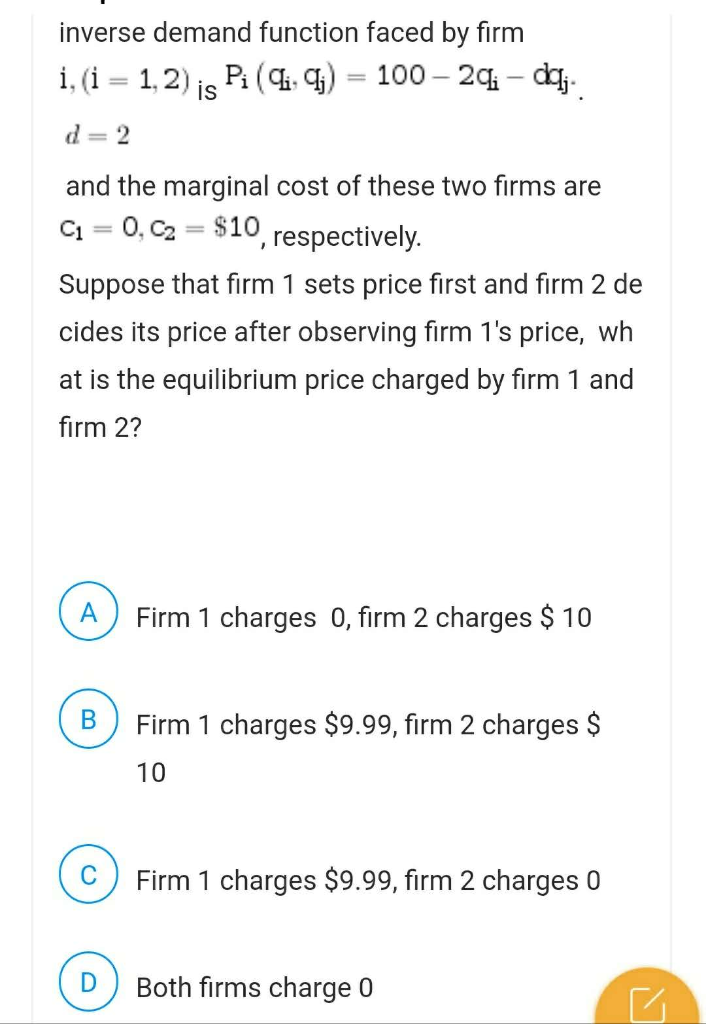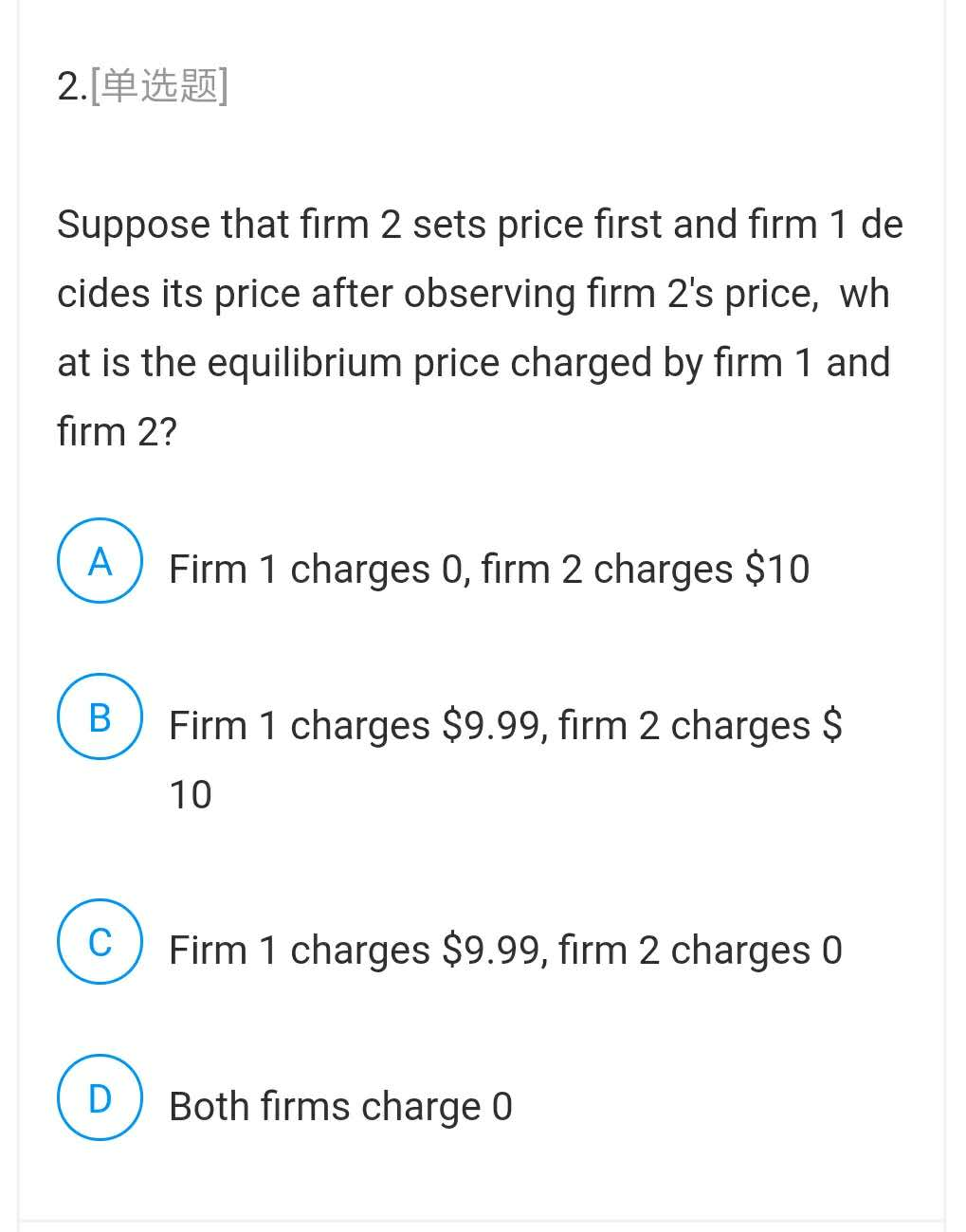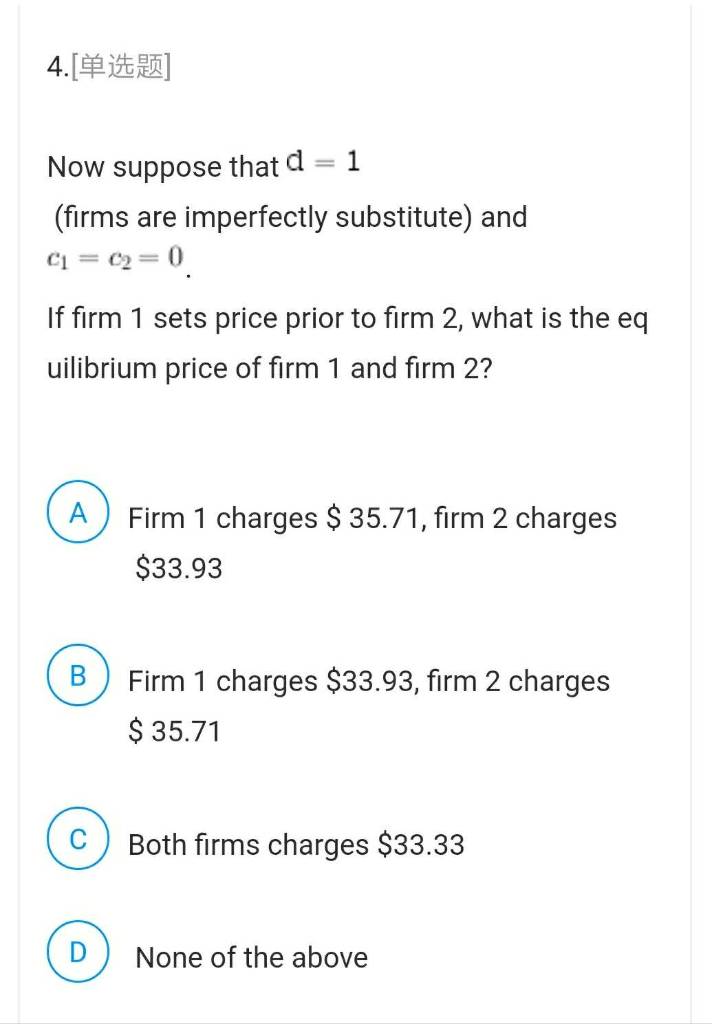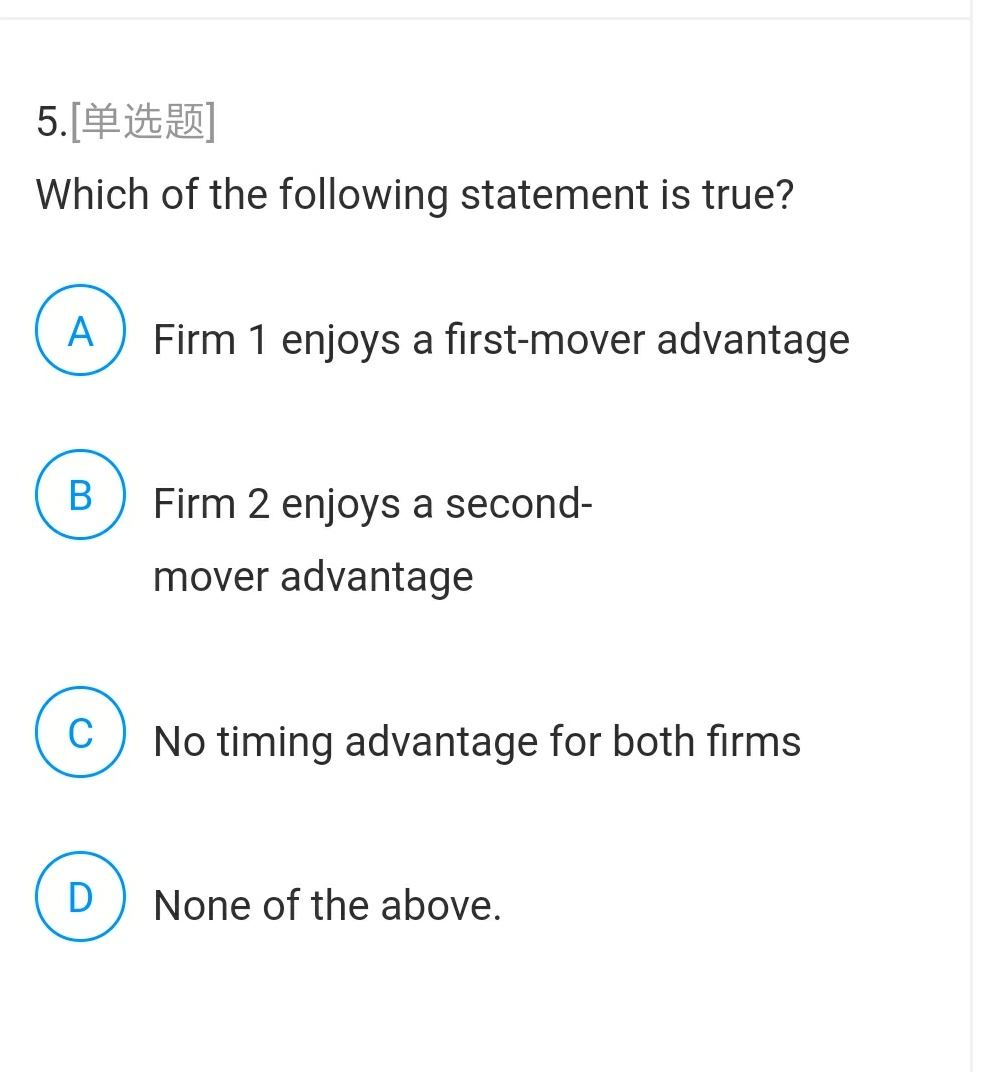




inverse demand function faced by firm 1, (i = 1, 2) is Pi (C1, 9j) = 100 - 24 - dq;. d=2 and the marginal cost of these two firms are C1 = 0, C2 = $10, respectively. Suppose that firm 1 sets price first and firm 2 de cides its price after observing firm 1's price, wh at is the equilibrium price charged by firm 1 and firm 2? ) Firm 1 charges 0, firm 2 charges $ 10 B ) Firm 1 charges $9.99, firm 2 charges $ 10 Firm 1 charges $9.99, firm 2 charges 0 (DBoth firms charge o 2.[153] Suppose that firm 2 sets price first and firm 1 de cides its price after observing firm 2's price, wh at is the equilibrium price charged by firm 1 and firm 2? Firm 1 charges 0, firm 2 charges $10 Firm 1 charges $9.99, firm 2 charges $ 10 Firm 1 charges $9.99, firm 2 charges 0 (D) Both firms charge o 3.[ 4 ] Based on question (1) and (2), which of the follo wing statement is true? Firm 1 enjoys a first- mover advantage if she sets price pri or to firm 2 Firm 2 enjoys a first- mover advantage if she sets price pri or to firm 1 There is no timing advantage for both firms (D None of the above 4.[ 4 ] Now suppose that d = 1 (firms are imperfectly substitute) and C1 = 02 = 0 If firm 1 sets price prior to firm 2, what is the eq uilibrium price of firm 1 and firm 2? ) Firm 1 charges $ 35.71, firm 2 charges $33.93 Firm 1 charges $33.93, firm 2 charges $ 35.71 Both firms charges $33.33 None of the above 5.[& ita] Which of the following statement is true? (A) Firm 1 enjoys a first-mover advantage Firm 2 enjoys a second- mover advantage No timing advantage for both firms None of the above. inverse demand function faced by firm 1, (i = 1, 2) is Pi (C1, 9j) = 100 - 24 - dq;. d=2 and the marginal cost of these two firms are C1 = 0, C2 = $10, respectively. Suppose that firm 1 sets price first and firm 2 de cides its price after observing firm 1's price, wh at is the equilibrium price charged by firm 1 and firm 2? ) Firm 1 charges 0, firm 2 charges $ 10 B ) Firm 1 charges $9.99, firm 2 charges $ 10 Firm 1 charges $9.99, firm 2 charges 0 (DBoth firms charge o 2.[153] Suppose that firm 2 sets price first and firm 1 de cides its price after observing firm 2's price, wh at is the equilibrium price charged by firm 1 and firm 2? Firm 1 charges 0, firm 2 charges $10 Firm 1 charges $9.99, firm 2 charges $ 10 Firm 1 charges $9.99, firm 2 charges 0 (D) Both firms charge o 3.[ 4 ] Based on question (1) and (2), which of the follo wing statement is true? Firm 1 enjoys a first- mover advantage if she sets price pri or to firm 2 Firm 2 enjoys a first- mover advantage if she sets price pri or to firm 1 There is no timing advantage for both firms (D None of the above 4.[ 4 ] Now suppose that d = 1 (firms are imperfectly substitute) and C1 = 02 = 0 If firm 1 sets price prior to firm 2, what is the eq uilibrium price of firm 1 and firm 2? ) Firm 1 charges $ 35.71, firm 2 charges $33.93 Firm 1 charges $33.93, firm 2 charges $ 35.71 Both firms charges $33.33 None of the above 5.[& ita] Which of the following statement is true? (A) Firm 1 enjoys a first-mover advantage Firm 2 enjoys a second- mover advantage No timing advantage for both firms None of the above











